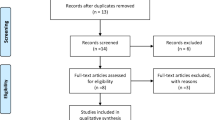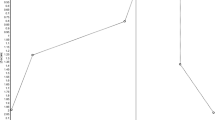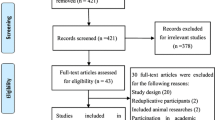Abstract
Insulin resistance is the main feature in type 2 diabetes mellitus (T2DM). Insulin resistance occurs when there is a failure or reduced activation of phosphoidilinositol-3-kinase pathway. Physical exercise (PE) can prevent and fight insulin resistance. Resistance training (RT), aerobic training (AT), and high-intensity interval training (HIIT) are different types of PE and have the ability to produce increased phosphorylation of insulin receptors favoring the increasing of the activity of insulin pathways during and after physical activity. The objective of this study was to check through a literature review the benefits of AT, RT, and HIIT over insulin resistance in T2DM. It was made a research in PubMed using the words PE, insulin resistance, diabetes, AT, RT, and HIIT. The most relevant papers with results over glycemia were selected. There was better glycemia management in moderate AT and RT, and during HIIT sessions. HIIT presented increased cardiovascular risks to T2DM individuals. Lower risks with more benefits were seen at moderate AT. All three types of PE can be performed as a tool to prevent and fight insulin resistance in T2DM. When evaluating safety and benefits to diabetics, moderate AT provides best benefits than RT and HIIT to T2DM individuals.

Similar content being viewed by others
References
American Diabetes Association (ADA). Diagnosis and classification of diabetes mellitus. Diabetes Care [Internet]. 2014 [cited 2016 Dec 4];37 Suppl 1:S81–90. Available from: http://www.ncbi.nlm.nih.gov/pubmed/24357215.
IDF. International Diabetes Federation. Diabetes Atlas. Seventh Edition. 2015:1-140. Available from: http://www.diabetesatlas.org.
Desisto CL, Kim SY, Sharma AJ. Prevalence estimates of gestational diabetes mellitus in the United States, Pregnancy Risk Assessment Monitoring System ( PRAMS ), 2007–2010. Prev Chronic Dis. 2014;11(12):1–9.
Agrawal A, Varma K, Gupta R. Physical activity of urban middle aged women in different domains: a cross sectional study. Int J Diabetes Dev Ctries. 2015:1–7.
Folli F, Saad MJ, Backer JM, Kahn CR. Insulin stimulation of phosphatidylinositol 3-kinase activity and association with insulin receptor substrate 1 in liver and muscle of the intact rat *. J Biol Chem. 1992;267:22171–7.
American Diabetes Association (ADA). Standards of medical care in diabetes--2014. Diabetes Care [Internet]. 2014 [Cited 2014 Jul 10];37 Suppl 1(October 2013):S14–80. Available from: http://www.ncbi.nlm.nih.gov/pubmed/24357209.
Snel M, Gastaldelli A, Ouwens DM, Hesselink MKC, Schaart G, Buzzigoli E, et al. Effects of adding exercise to a 16-week very low-calorie diet in obese, insulin-dependent type 2 diabetes mellitus patients. J Clin Endocrinol Metab [Internet]. 2012 [cited 2014 Jul 18];97(7):2512–20. Available from: http://www.ncbi.nlm.nih.gov/pubmed/22569236.
Vind BF, Birk JB, Vienberg SG, Andersen B, Beck-Nielsen H, Wojtaszewski JFP, et al. Hyperglycaemia normalises insulin action on glucose metabolism but not the impaired activation of AKT and glycogen synthase in the skeletal muscle of patients with type 2 diabetes. Diabetologia [Internet]. 2012 [cited 2014 Jul 18];55(5):1435–45. Available from: http://www.ncbi.nlm.nih.gov/pubmed/22322917.
Inzucchi SE, Bergenstal RM, Buse JB, Diamant M, Ferrannini E, Nauck M, et al. Management of hyperglycaemia in type 2 diabetes: a patient-centered approach. Position statement of the American Diabetes Association (ADA) and the European Association for the Study of Diabetes (EASD). Diabetologia [Internet]. 2012 [cited 2014 Jul 12];55(6):1577–96. Available from: http://www.ncbi.nlm.nih.gov/pubmed/22526604.
VanDijk J, Manders R, Tummers K, Bonomi A, Stehouwer C, Hartgens F, et al. Both resistance- and endurance-type exercise reduce the prevalence of hyperglycaemia in individuals with impaired glucose tolerance and in insulin-treated and non-insulin-treated type 2 diabetic patients. Diabetologia [Internet]. 2012 [cited 2014 Jul 18];55(5):1273–82 Available from: http://www.pubmedcentral.nih.gov/articlerender.fcgi?artid=3331783&tool=pmcentrez&rendertype=abstract
Shafrir E. History and perspective of diabetes illustrated by postage stamps. 1999.
Nolan CJ, Damm P, Prentki M. Type 2 diabetes across generations: from pathophysiology to prevention and management. Lancet [Internet]. Elsevier Ltd; 2011 [cited 2014 Jul 11];378(9786):169–81. Available from: http://www.ncbi.nlm.nih.gov/pubmed/21705072.
Carvalho CRO, Carvalheira JBC, Lima MHM, Zimmerman SF, Caperuto LC, Amanso A, et al. Novel signal transduction pathway for luteinizing hormone and its interaction with insulin: activation of Janus kinase/signal transducer and activator of transcription and phosphoinositol 3-kinase/Akt pathways. Endocrinology [Internet]. 2003 [cited 2015 Jan 2];144(2):638–47. Available from: http://www.ncbi.nlm.nih.gov/pubmed/12538627.
Chang L, Chiang S-H, Saltiel AR. TC10alpha is required for insulin-stimulated glucose uptake in adipocytes. Endocrinology [Internet]. 2007 [cited 2014 Nov 27];148(1):27–33. Available from: http://www.ncbi.nlm.nih.gov/pubmed/17008399.
Egawa T, Tsuda S, Ma X, Hamada T, Hayashi T. Caffeine modulates phosphorylation of insulin receptor substrate-1 and impairs insulin signal transduction in rat skeletal muscle. J Appl Physiol [Internet]. 2011 [cited 2014 Jul 18];111(6):1629–36. Available from: http://www.ncbi.nlm.nih.gov/pubmed/21940847.
Hardin DS, Dominguez H, Timothy W. Muscle group-specific regulation of Glut 4 glucose transporters in control, diabetic, and insulin treated diabetic rats. Metabolism. 1993;42(10):1310–5.
Fantin VR, Wang Q, Lienhard GE, Keller SR, Valeria R. Mice lacking insulin receptor substrate 4 exhibit mild defects in growth, reproduction, and glucose homeostasis. Am J Physiol Endocrinol Metab. 2000;278:127–33.
Withers DJ, Gutierrez JS, Towery H, Burks DJ, Ren J, Previs S, et al. Disruption of IRS-2 causes type 2 diabetes in mice. Nature. 1998;391(February):900–4.
Saad MJA, Araki E, Rothenberg PL, White MF, Kahn CR. Regulation of insulin receptor substrate-1 in liver and muscle of animal models of insulin resistance. J Clin Invest. 1992;90(November):1839–49.
Versteyhe S, Blanquart C, Hampe C, Mahmood S, Christeff N, De Meyts P, et al. Insulin receptor substrates-5 and -6 are poor substrates for the insulin receptor. Mol Med Rep. 2010;3:189–93.
Saad MJA, Folli F, Kahn JA, Kahn CR. Rapid publication. J Clin Invest. 1993;92(October):2065–72.
Shepherd PR, Nave BT, Siddle K. Insulin stimulation of glycogen synthesis and glycogen synthase activity is blocked by wortmannin and rapamycin in 3T3-L1 adipocytes: evidence for the involvement of phosphoinositide 3-kinase and p70 ribosomal protein-S6 kinase. J Biochem. 1995;28:25–8.
Backer JM, Jr MGM, Shoelson SE, Chin DJ, Sun X, Hu P, et al. Phosphatidylinositol 3 ’ -kinase is activated by association with IRS-1 during insulin stimulation. EMBO J. 1992;11(9):3469–79.
Czech MP, Corvera S. Signaling Mechanisms That Regulate Glucose Transport. J Biol Chem [Internet]. 1999 [cited 2014 Dec 17];274(4):1865–8 Available from: http://www.jbc.org/cgi/doi/10.1074/jbc.274.4.1865
Hu FB, Manson JE, Stampfer MJ, COlditz G, Liu S, Solomon CG, et al. Diet, lifestyle, and the risk of type 2 diabetes mellitus in women. New England J Med. 2001;345(11):790–7.
Emanuela F, Grazia M, Marco DR, Maria Paola L, Giorgio F, Marco B. Inflammation as a link between obesity and metabolic syndrome. J Nutr Metab [Internet]. 2012 [cited 2014 Dec 12];2012:1–7 Available from: http://www.pubmedcentral.nih.gov/articlerender.fcgi?artid=3317136&tool=pmcentrez&rendertype=abstract
Oliveira NRC, Marques SO, Luciano TF, Pauli JR, Moura LP, Caperuto E, et al. Treadmill training increases SIRT-1 and PGC-1 α protein levels and AMPK phosphorylation in quadriceps of middle-aged rats in an intensity-dependent manner. Mediators Inflamm [Internet]. 2014 [cited 2014 Dec 15];2014:1–12 Available from: http://www.hindawi.com/journals/mi/2014/987017/abs/
Ostler JE, Maurya SK, Dials J, Roof SR, Devor ST, Ziolo MT, et al. Effects of insulin resistance on skeletal muscle growth and exercise capacity in type 2 diabetic mouse models. Am J Physiol Endocrinol Metab [Internet]. 2014 [cited 2014 Nov 27];306(6):E592–605. Available from: http://www.ncbi.nlm.nih.gov/pubmed/24425761.
Roden M. Exercise in type 2 diabetes: to resist or to endure? Diabetologia [Internet]. 2012 [cited 2014 Jul 18];55(5):1235–9 Available from: http://www.pubmedcentral.nih.gov/articlerender.fcgi?artid=3328674&tool=pmcentrez&rendertype=abstract
Haskell WL, Lee I-M, Pate RR, Powell KE, Blair SN, Franklin BA, et al. Physical activity and public health: updated recommendation for adults from the American College of Sports Medicine and the American Heart Association. Circulation [Internet]. 2007 [cited 2014 Jul 10];116(9):1081–93. Available from: http://www.ncbi.nlm.nih.gov/pubmed/17671237.
Howley ET. Type of activity: resistance, aerobic and leisure versus occupational physical activity. Med Sci Sports Exerc [Internet]. 2001;33(Supplement):S364–9 Available from: http://content.wkhealth.com/linkback/openurl?sid=WKPTLP:landingpage&an=00005768-200106001-00005.
Krisan AD, Collins DE, Crain AM, Kwong CC, Singh MK, Bernard JR, et al. Resistance training enhances components of the insulin signaling cascade in normal and high-fat-fed rodent skeletal muscle. J Appl Physiol [Internet]. 2004 [cited 2014 Jul 18];96(5):1691–700. Available from: http://www.ncbi.nlm.nih.gov/pubmed/14707149.
Hallsworth K, Fattakhova G, Hollingsworth KG, Thoma C, Moore S, Taylor R, et al. Resistance exercise reduces liver fat and its mediators in non-alcoholic fatty liver disease independent of weight loss. Gut [Internet]. 2011 [cited 2014 Jul 18];60(9):1278–83 Available from: http://www.pubmedcentral.nih.gov/articlerender.fcgi?artid=3152868&tool=pmcentrez&rendertype=abstract.
Morais PK, Campbell CSG, Sales MM, Motta DF, Moreira SR, Cunha VNC, et al. Acute resistance exercise is more effective than aerobic exercise for 24h blood pressure control in type 2 diabetics. Diabetes Metab [Internet]. Elsevier Masson SAS; 2011 [cited 2014 Jul 18];37(2):112–7. Available from: http://www.ncbi.nlm.nih.gov/pubmed/21159536.
Zierath JR. Invited review: Exercise training-induced changes in insulin signaling in skeletal muscle. J Appl Physiol [Internet]. 2002 [cited 2014 Jul 18];93(2):773–81. Available from: http://www.ncbi.nlm.nih.gov/pubmed/12133891.
Pereira LO, Lancha AH. Effect of insulin and contraction up on glucose transport in skeletal muscle. Prog Biophys Mol Biol [Internet]. 2004 [cited 2014 Jul 18];84(1):1–27 Available from: http://linkinghub.elsevier.com/retrieve/pii/S0079610703000555
Friedman JE, Sherman WM, Reed MJ, Elton CW, Dohm GL. Exercise training increases glucose transporter protein GLUT-4 in skeletal muscle of obese Zucker (fa/fa) rats. FEBS Lett [Internet]. 1990;268(1):13–6. Available from: http://www.ncbi.nlm.nih.gov/pubmed/2200706.
Jorgensen SB, Richter EA, Wojtaszewski JFP. Role of AMPK in skeletal muscle metabolic regulation and adaptation in relation to exercise. J Physiol [Internet]. 2006 [cited 2014 Dec 22];574(Pt 1):17–31 Available from: http://www.pubmedcentral.nih.gov/articlerender.fcgi?artid=1817795&tool=pmcentrez&rendertype=abstract.
Tunstall RJ, Mehan KA, Wadley GD, Collier GR, Bonen A, Hargreaves M, et al. Exercise training increases lipid metabolism gene expression in human skeletal muscle. Am J Physiol Endocrinol Metab. 2002;283:66–72.
Perseghin G, Price T, Petersen K, Roden M, Cline G, Gerow K, et al. Exercise and insulin sensitivity increased glucose transport phosphorylation and muscle glycogen synthesis after exercise training in insulin resistant. N Engl J Med. 1996;335(18):1357–62.
Song WJ, Sohng KY. Effects of progressive resistance training on body composition, physical fitness and quality of life of patients on hemodialysis. J Korean Acad Nurs [Internet]. 2012 ;42(7):947–56. Available from: http://www.ncbi.nlm.nih.gov/pubmed/23377590.
Gundersen K. Excitation-transcription coupling in skeletal muscle: the molecular pathways of exercise. Biol Rev Camb Philos Soc [Internet]. 2011 [cited 2014 Jul 14];86(3):564–600 Available from: http://www.pubmedcentral.nih.gov/articlerender.fcgi?artid=3170710&tool=pmcentrez&rendertype=abstract.
Billat L, Sirvent P, Py G, Koralsztein J, Mercier J. The concept of maximal lactate steady state: a bridge between biochemistry. Physiol Sport Med. 2003;33(6):407–26.
De Araujo CC, Silva JD, Samary CS, Guimaraes IH, Marques PS, Oliveira GP, et al. Regular and moderate exercise before experimental sepsis reduces the risk of lung and distal organ injury. J Appl Physiol [Internet]. 2012 [cited 2015 Sep 7];112(7):1206–14 Available from: http://jap.physiology.org/cgi/doi/10.1152/japplphysiol.01061.2011
Hong H, Jeong J, Kong J, Lee S, Yang S, Ha C. Effect of walking exercise on abdominal fat, insulin resistance and serum cytokines in obese women. J Exerc Nutr Biochem. 2014;18(3):277–85.
Ming Z, Legare DJ, Lautt WW. Obesity, syndrome X, and diabetes: the role of HISS-dependent insulin resistance altered by sucrose, an antioxidant cocktail, and age. Can J Physiol Pharmacol [Internet]. 2009 [cited 2014 Jul 18];87(10):873–82. Available from: http://www.ncbi.nlm.nih.gov/pubmed/20052013.
Golbidi S, Laher I. Exercise induced adipokine changes and the metabolic syndrome. J Diabetes Res [Internet]. Hindawi Publishing Corporation; 2014 [cited 2014 Jul 18];2014:726861 Available from: http://www.pubmedcentral.nih.gov/articlerender.fcgi?artid=3915640&tool=pmcentrez&rendertype=abstract.
Turner N, Cooney GJ, Kraegen EW, Bruce CR. Fatty acid metabolism, energy expenditure and insulin resistance in muscle. J Endocrinol [Internet]. 2014 [cited 2014 Nov 27];220(2):T61–79. Available from: http://www.ncbi.nlm.nih.gov/pubmed/24323910.
Schiaffino S, Dyar KA, Ciciliot S, Blaauw B, Sandri M. Mechanisms regulating skeletal muscle growth and atrophy. FEBS J [Internet]. 2013 [cited 2014 Oct 20];280(17):4294–314. Available from: http://www.ncbi.nlm.nih.gov/pubmed/23517348.
Pearen MA, Eriksson NA, Fitzsimmons RL, Goode JM, Martel N, Andrikopoulos S, et al. The nuclear receptor, Nor-1, markedly increases type II oxidative muscle fibers and resistance to fatigue. Mol Endocrinol [Internet]. 2012 [cited 2015 Jan 19];26(3):372–84. Available from: http://www.ncbi.nlm.nih.gov/pubmed/22282471.
Terada T, Friesen A, Chahal BS, Bell GJ, McCargar LJ, Boulé NG. Exploring the variability in acute glycemic responses to exercise in type 2 diabetes. J Diabetes Res [Internet]. 2013;2013:591574 Available from: http://www.pubmedcentral.nih.gov/articlerender.fcgi?artid=3745832&tool=pmcentrez&rendertype=abstract.
Weston KS, Wisløff U, Coombes JS. High-intensity interval training in patients with lifestyle-induced cardiometabolic disease: a systematic review and meta-analysis. Brazilian J Sport Med. 2014;48:1227–34.
Edge J, Eynon N, McKenna MJ, Goodman CA, Harris RC, Bishop DJ. Altering the rest interval during high-intensity interval training does not affect muscle or performance adaptations. Exp Physiol [Internet]. 2013 [cited 2015 Jan 19];98(2):481–90. Available from: http://www.ncbi.nlm.nih.gov/pubmed/22923232.
American College of Sports Medicine. ACSM information on high-intensity interval training. Am Coll Sports Med. 2014;1:1–2.
Francois ME, Little JP. The impact of acute high-intensity interval exercise on biomarkers of cardiovascular health in type 2 diabetes. Eur J Appl Physiol [Internet]. Springer Berlin Heidelberg; 2017;1–10. Available from: https://doi.org/10.1007/s00421-017-3649-2
Ferreira AP, Ferreira CB, De Souza VC, Córdova CODA, Silva GCB, Nóbrega ODT, et al. The influence of intense intermittent versus moderate continuous exercise on postprandial lipemia. Clinics [Internet]. 2011 [cited 2015 19];66(4):535–41 Available from: http://www.scielo.br/scielo.php?script=sci_arttext&pid=S1807-59322011000400003&lng=en&nrm=iso&tlng=en.
Grice BA, Mason CC, Weil EJ, Knowler WC, Pomeroy J. The relationship between insulin sensitivity and maximal oxygen uptake is confounded by method of adjustment for body composition. Diabetes Vasc Dis Res [Internet]. 2013 [cited 2015 Jan 4];10(6):530–5. Available from: http://www.ncbi.nlm.nih.gov/pubmed/24062163.
Gibala MJ, McGee SL, Garnham AP, Howlett KF, Snow RJ, Hargreaves M. Brief intense interval exercise activates AMPK and p38 MAPK signaling and increases the expression of PGC-1alpha in human skeletal muscle. J Appl Physiol [Internet]. 2009 [cited 2015 Jan 20];106(3):929–34. Available from: http://www.ncbi.nlm.nih.gov/pubmed/19112161.
Hardie DG. AMP-activated protein kinase: a key system mediating metabolic responses to exercise. Med Sci Sports Exerc [Internet]. 2004 [cited 2014 Dec 26];36(1):28–34. Available from: http://www.ncbi.nlm.nih.gov/pubmed/14707764.
Biessels GJ, Kappelle LJ. Increased risk of Alzheimer’s disease in type II diabetes: insulin resistance of the brain or insulin-induced amyloid pathology? Proteins Dis. 2005;33:1041–4.
De Felice FG, Ferreira ST. Inflammation, defective insulin signaling, and mitochondrial dysfunction as common molecular denominators connecting type 2 diabetes to alzheimer disease. Diabetes [Internet]. 2014 [cited 2015 Mar 28];63(7):2262–72 Available from: http://diabetes.diabetesjournals.org/cgi/doi/10.2337/db13-1954.
Lourenco M V, Clarke JR, Frozza RL, Bomfim TR, Forny-Germano L, Batista AF, et al. TNF-α mediates PKR-dependent memory impairment and brain IRS-1 inhibition induced by Alzheimer’s β-amyloid oligomers in mice and monkeys. Cell Metab [Internet]. 2013 [cited 2015 Feb 4];18(6):831–43. Available from: http://www.ncbi.nlm.nih.gov/pubmed/24315369.
Bomfim TR, Forny-germano L, Sathler LB, Brito-moreira J, Houzel J, Decker H, et al. An anti-diabetes agent protects the mouse brain from defective insulin signaling caused by Alzheimer’s disease-associated Aβ oligomers. J Clin Invest. 2012;122(4):1339–53.
Farshbaf MJ, Ghaedi K, Megraw TL. Does PGC1 a/FNDC5/BDNF elicit the beneficial effects of exercise on neurodegenerative disorders? NeuroMolecular Med [Internet]. Springer US; 2015; Available from: https://doi.org/10.1007/s12017-015-8370-x
Olesen J, Ringholm S, Nielsen MM, Brandt CT, Pedersen JT, Halling JF, et al. Role of PGC-1α in exercise training- and resveratrol-induced prevention of age-associated inflammation. Exp Gerontol [Internet]. Elsevier Inc.; 2013 [cited 2014 Nov 27];48(11):1274–84 Available from: http://www.pubmedcentral.nih.gov/articlerender.fcgi?artid=4045249&tool=pmcentrez&rendertype=abstract.
Acknowledgements
I would like to thank CAPES.
Author information
Authors and Affiliations
Corresponding author
Rights and permissions
About this article
Cite this article
De Sousa, R.A.L. Brief report of the effects of the aerobic, resistance, and high-intensity interval training in type 2 diabetes mellitus individuals. Int J Diabetes Dev Ctries 38, 138–145 (2018). https://doi.org/10.1007/s13410-017-0582-1
Received:
Accepted:
Published:
Issue Date:
DOI: https://doi.org/10.1007/s13410-017-0582-1




